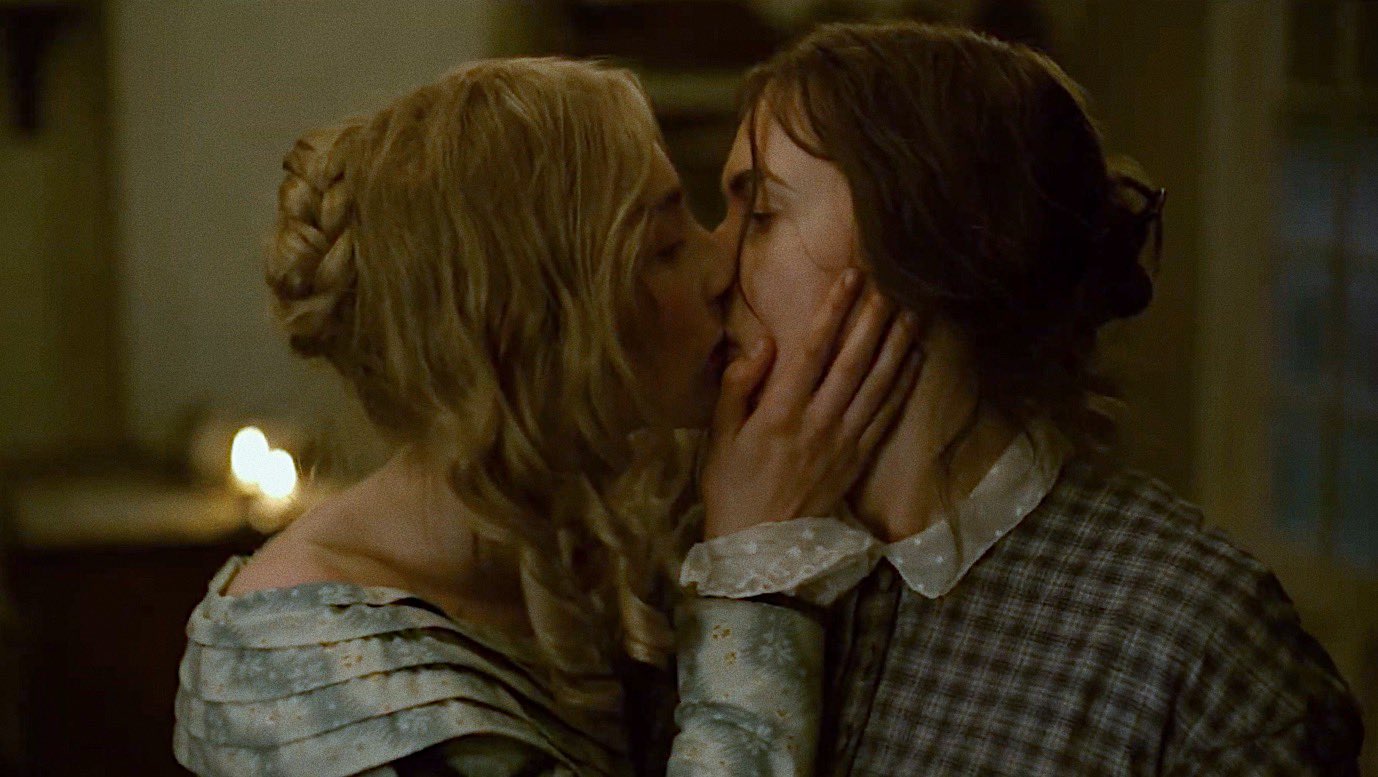What to Watch Verdict
'Ammonite' is a stony facsimile of other lesbian period dramas that doesn’t make enough of an interesting point to serve as more than an awards-baiting footnote.
Pros
- +
👗Kate Winslet and Saoirse Ronan give very committed performances.
- +
👗The final scenes act as a clever bit of narrative subversion.
Cons
- -
👗The tone is understated to the point of sterility.
- -
👗The dull color palette bleeds any life from the film.
It’s very tempting when reviewing Ammonite to say “It’s fine,” shrug and walk away. It’s a film that is almost exactly what it appears to be — a period lesbian romance where some of our most acclaimed actresses can pretend to be attracted to one another for two hours in the hopes of awards nominations. But it’s also a really disappointing example — a film that is technically competent but tedious to sit through. It’s a stony facsimile of other lesbian period dramas like Portrait of a Lady on Fire, possibly by design, that doesn’t make enough of an interesting point to act as more than an awards-baiting footnote.
Based on the real exploits of fossil-hunter Mary Anning (Kate Winslet) in 1840s England, Ammonite finds her living with her mother (Gemma Jones) in a seaside cottage, selling her prehistoric finds with hopes of finding larger samples to contribute to the scientific community. A wealthy tourist (James McArdle) pays to join her on her beach-bound excavations but quickly becomes disillusioned. He leaves his wife Charlotte (Saoirse Ronan) in Mary’s reluctant care, in an attempt to force her to recover from depression — brought on by the death of their infant. When a sudden bout of physical illness leaves Charlotte immobile, Mary is left to nurse her back to health, prompting Charlotte to open up to Mary with hopes of Mary opening up in return.
Charlotte’s transition from traumatized repression to doe-eyed adoration is sudden and jarring. To some degree, this is intentional. Charlotte’s desire to draw Mary out may be sudden, but it’s also an expression of her relative youth — a kind of giddy desperation to connect with someone — and an unspoken attraction to someone who actively seeks to keep everyone, including Charlotte, at arm’s length. That in itself should be a compelling foundation for a romantic connection between disparate personalities.
Yet the film can never quite break free of Mary’s frigidity, as even Mary eventually acquiesces to Charlotte’s advances. Some of this can be attributed to a color palette dominated by muted greys and blues — which could be seen as appropriate for the English seaside setting but which also conveys a dour attitude. But more importantly, the romantic chemistry between the leads never quite clicks into place. Winslet tries desperately to bridge the gap between Mary’s antisocial nature and her newfound lust while remaining within writer-director Francis Lee’s understated tone. The effort proves too much as Mary is never allowed the emotional expressiveness to be relatable. Even the sex scenes fall squarely into the realm of theoretically erotic, personified more by violent clashes rushing to climax than displays of intimacy.
The only thing preventing me from writing the film off entirely is a single scene, in the third act, that recontextualizes Mary and Charlotte’s relationship in a way that makes the film’s tonal sterility seem intentional. It’s the scene that transforms the film from a dull blur to an interesting conversation piece. But that still fails to make up for the two tepid hours it takes to get there and it feels wasteful to sacrifice any chance at emotional investment for a single point of nuance.
It would be unfair to criticize Ammonite for not being Portrait of a Lady on Fire, obvious points of comparison notwithstanding. It’s a different film with different objectives and I could reasonably argue that it achieves its goals, with its final act of narrative subversion. But do we really need the hollow, drawn-out romance simply to make a point about characters we aren’t given enough opportunity to properly relate to? Do we really need a stone-faced protagonist in a tepid relationship that should be the film’s selling point? It’s easy to be disappointed with how it fails on an emotional level while respecting Ammonite for its loftier ambitions.
The latest updates, reviews and unmissable series to watch and more!
Leigh Monson has been a professional film critic and writer for six years, with bylines at Birth.Movies.Death., SlashFilm and Polygon. Attorney by day, cinephile by night and delicious snack by mid-afternoon, Leigh loves queer cinema and deconstructing genre tropes. If you like insights into recent films and love stupid puns, you can follow them on Twitter.


